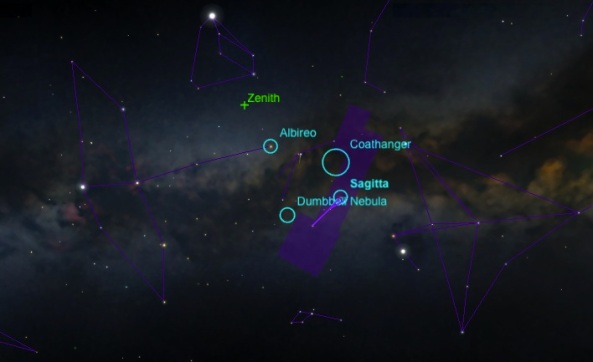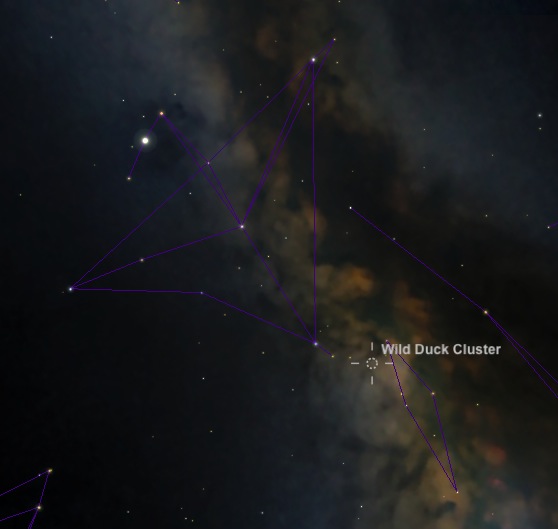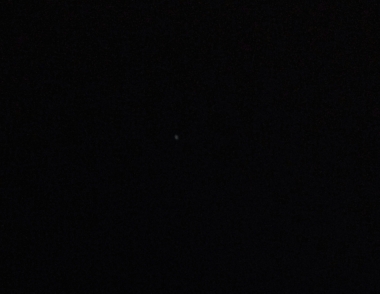Last night, I set up the 8″ Meade, my 4.5″ Orion Autotracker, and my 15×70 Orion binoculars for an all night observing session. I was only staying up until dawn to catch two Iridium flares at 6:17am, but I’m glad I decided to set up because I was able to observe things I hadn’t seen under my home skies. I ended up only seeing one of the two flares, but the observations leading up to dawn made up for that shortcoming.
I don’t even really know where to begin. Maybe I should simply list the targets and observations I made (in no particular order).
NELM, (Naked Eye Limiting Magnitude) was an impressive 5.5 to 6. The star I identified was magnitude +5.8 according to SkySafari Pro. Transparency was outstanding. Seeing was great, but not perfect.
As a testament to the issues with Seeing, Uranus was not easy to bring into focus, however I think the 8″ Meade LX200 doesn’t focus sharply at higher magnifications to begin with. I’m going to miss having the Meade in my immediate possession. When the Worley Observatory is finished, that scope is going into the storage room with other club scopes.
Neptune was eventually visible once it cleared an oak tree. I believe I saw Triton, one of its moons with averted vision.
M31 was okay, but I wanted to have a wide field view in the 4.5. M110 was easily visible in the Meade and showed up slightly larger than I’m accustomed to. The outer edges of M31 faded more than expected in the 4.5.
Cygnus was full of good observations. I was able to see the Crescent Nebula (NGC 6888/Caldwell 27) using UHC and OIII filters in the 8″ Meade. I was able to observe the North America Nebula in the 4.5 using my H-Beta filter. The Veil looked nice in both scopes, but detail wasn’t popping out in either the Eastern or Western portions.
The Double Cluster was bursting with stars. The Smiling Cyclops was easy to spot. Normally, its smile has five visible stars, but the fainter half takes patience to see. Last night, the faint half of the smile took no effort at all and each star had a pinpoint appearance.
The nearby Heart & Soul Nebula were both visible using H-Beta. They were only faintly visible with a UHC filter. I have only observed these two nebulae at Okie Tex and never here at home. Again, conditions were outstanding.
Mirach’s Ghost was also visible in both scopes as a smudge. In the Meade, it was obvious. In the 4.5, I could see it at medium power, but I had to use my 8mm eyepiece to better distinguish it against Mirach’s bright glare.
The 4.5 was also able to pull out sections of the California Nebula with the H-Beta filter.
M33 was visible in binoculars, the 4.5, and the Meade. Later on in the night, M33’s core was apparent as a brighter smudge inside a fainter ball. Between 3am and 5am, I was able to see spiral arms in M33 in the 8″ Meade. That made my night. Spiral arms in M33!
I also split Polaris with the 4.5 using a 13mm eyepiece. I had to verify the location of its companion star with SkySafari (up & to the left). Looking at the star chart, the companion appears to line up with the point star, Errai, in Cepheus relative to Polaris. Draw a line from Polaris to Errai and you have the rough direction of its companion.
M1 was bright enough to observe, but no detail came out. I had the same problem with M27.
M42, however, was fan-freakin-tastic in the Meade. I could see M43. The structure within the center of M42 had some detail and appeared extremely clear. Unfortunately, I could only resolve the four main stars of the Trapezium.
I also observed a comet, C/2012 K1 Panstarrs. I had light pollution to observe through, but it was straight down from Procyon between a triangle and square of stars. It was only visible as a slightly rectangular faint smudge without any sign of a tail.
In terms of sketching, I knocked out six binocular doubles. I went after Albireo first, knocked out two pairs in the Pleiades in the same field of view, pegged two other pairs in the same field (Beta Cam and 11/12 Cam), and finished with 35 Cam (HIP 28765). For whatever reason, SkySafari Pro does not list 35 Cam in its database, but it does list HIP 28765.









